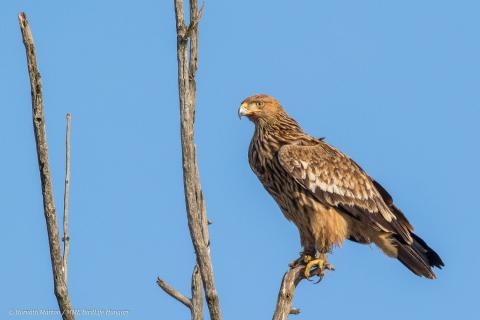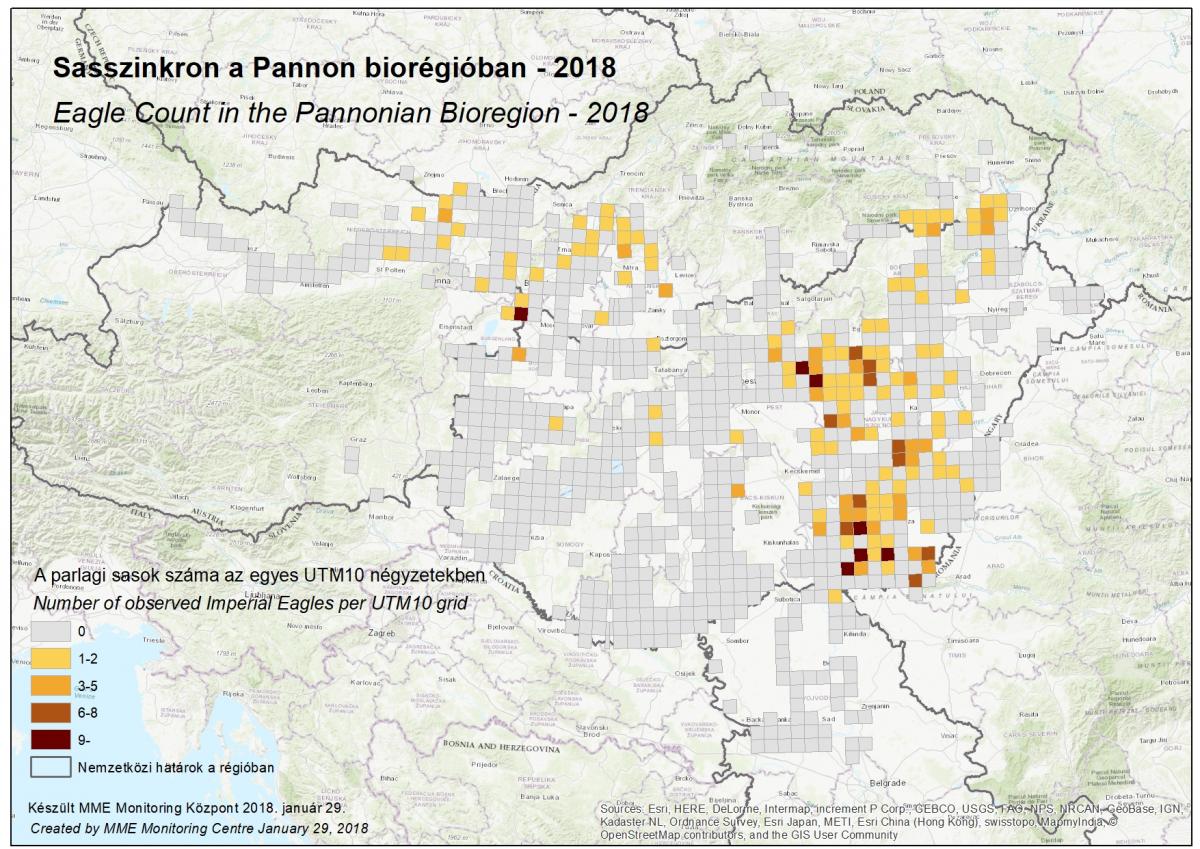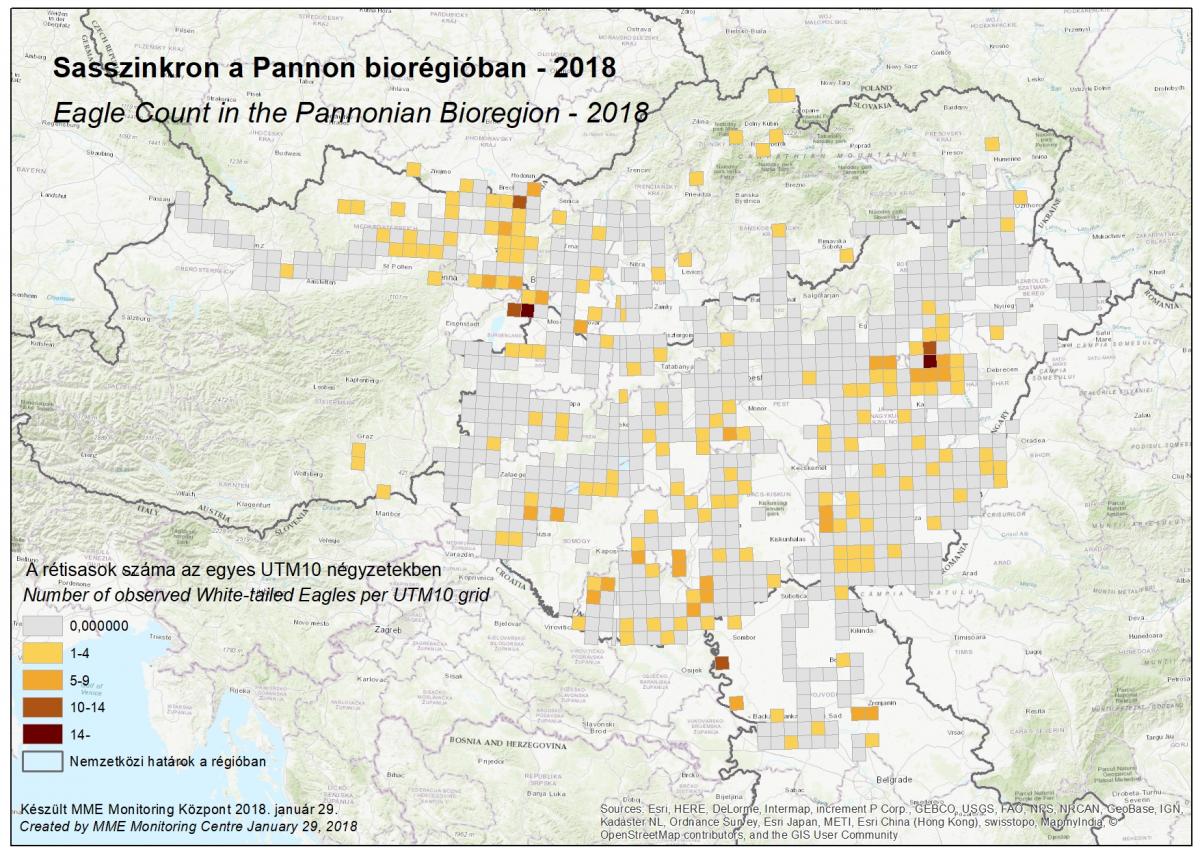Results of the 1st Pannonian Eagle Count

02.02.2018.
In Hungary already the 15th National Eagle Census was organized by MME/Birdlife Hungary in collaboration with the National Park Directorates and other NGOs in January, 2018.
This year, within the framework of the PannonEagle LIFE programme financed by the EU, numerous nature conservation organizations and experts joined the event from the neighbouring countries for the first time, which made it possible to draw the “Map of Eagles” wintering in the Carpathian Basin.
Field conditions were quite harsh in some areas due to adverse weather on this particular weekend, but still, the counters reached quite significant coverage. This year, 427 people participated in the event. With the great help of colleagues not only from Hungary, but from Slovakia, Czech Republic, Austria, Serbia and Romania we now know the numbers of wintering eagles in the region as accurate as possible.
During this year’s Eagle Count, volunteers recorded 1008-1022 White-tailed Eagles and 448-462 Imperial Eagles in these six countries all together.
Besides the regional tally of numbers of eagles, the survey covered all raptor species, following the previous years’ practice. Local participants visited 2651 2.5 x 2.5 km UTM grids, which reach the total of about 20506 square-kilometres.
In Hungary, altogether 753-766 White-tailed Eagles and 342-356 Imperial Eagles were recorded. Their number may seem high compared to their protected status, however, in fact they are still fairly rare today. Based on these figures, we can conclude that only 3.5 White-tailed Eagles and 2 Imperial Eagles occurred per 100 square-kilometres. It is easier to picture this if we imagine that one needs to cover 3000 football pitches to find a single White-tailed Eagle, but it takes 7000 same size pitches to get a glimpse of an Imperial Eagle.
Beside the White-tailed and Imperial Eagles, the even more rare Golden Eagles (2) and Spotted Eagles (4) got also recorded. In addition, 9378 individuals of thirteen other raptor species were seen during the Count. It is broken down as follows: Red Kite (41),Hen Harrier (785), Marsh Harrier (61), Sparrowhawk (196), Goshawk (21), Common Buzzard (5789-5858), Rough-legged Buzzard (264), Long-legged Buzzard (5), Common Kestrel (906), Saker Falcon (29-30), Peregrine Falcon (48-49) and Merlin (28). Besides diurnal raptors, some species of owls and raptorial songbirds were sighted as well: Short-eared Owl (13), Little Owl (10), Ural Owl (1), Raven (320-370) and Great Grey Shrike (141). Last but not least, the enigmatic Great Bustard was also found in a few areas, altogether 153-182 individuals.



